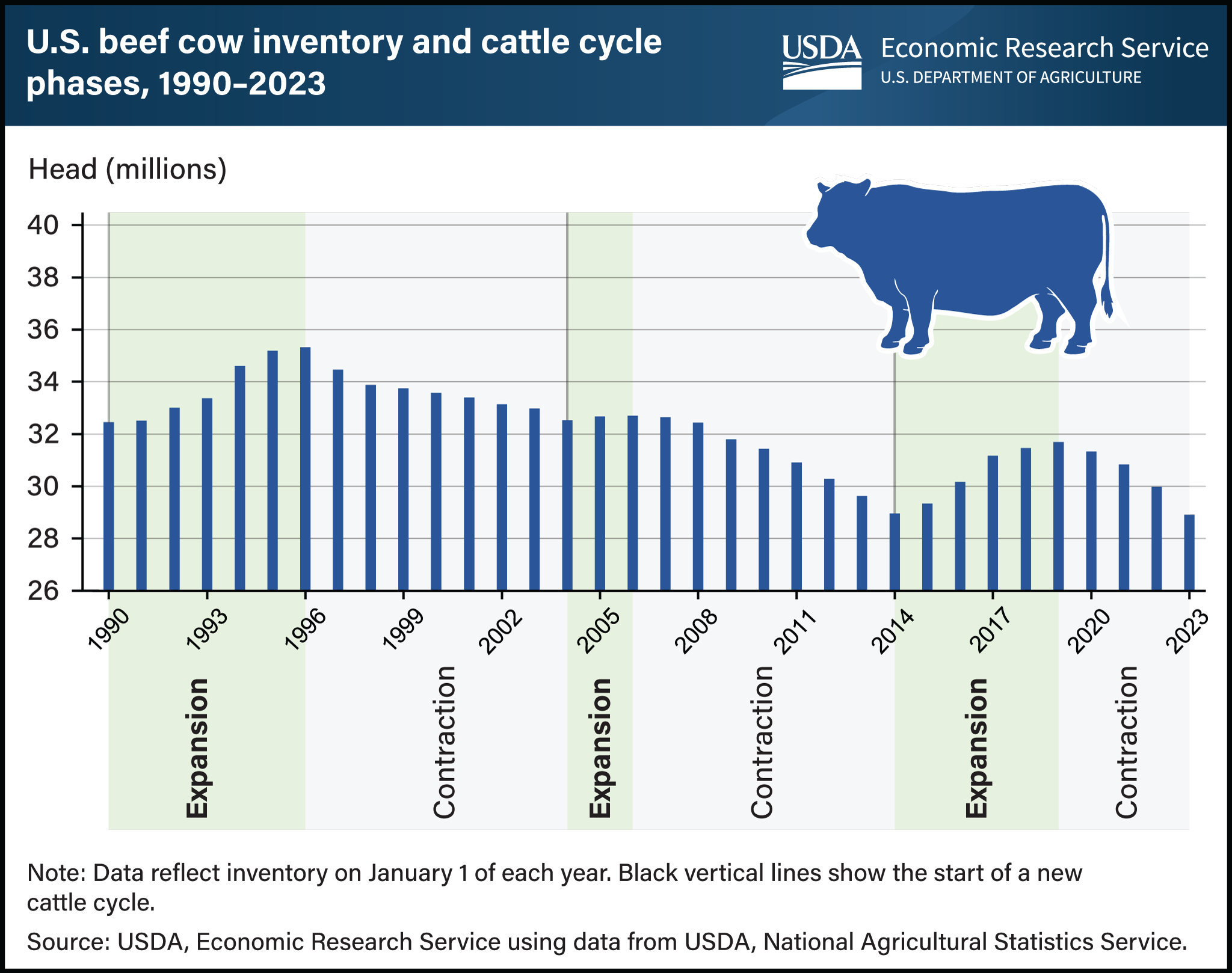U.S. beef cow inventory settling at progressively lower levels, drought contributing to most recent declines
- by LaPorchia A. Collins
- 4/20/2023

Changes in beef cow inventory are related to the phases of the cattle cycle—the expansion (increase) and contraction (decrease) of the U.S. beef cattle herd over time. This cycle evolves gradually and tends to span 8 to 12 years. The cyclical pattern follows the biological nature of beef cattle production and cattle producers’ responses to changes in prices and climate conditions. The current cattle cycle, which began in 2014, is now in a contraction phase, with inventory contracting at an increasing rate each year since 2020. On January 1, 2023, U.S. beef cow inventory was 28.9 million head, 3.6 percent less than the previous year. Drought is a significant contributor to recent declines in beef cow inventory, in part because of the detrimental effects of dry weather patterns on pasture and range conditions. At the start of 2023, nearly 93 percent of U.S. beef cows were in States where most of the pasture and range were rated in “very poor” to “fair” condition based on data from the USDA, National Agricultural Statistics Service (NASS). Cattle producers periodically provide supplemental feed, such as hay, to maintain animals when pasture conditions are poor. According to NASS, producers faced record-high prices of non-alfalfa hay during the last two quarters of 2022 and in each month through the beginning of 2023. High hay prices increase the cost of maintaining cattle and provide an incentive for producers to remove cattle from their herds. Except for one month in 2022, monthly beef cow slaughter has been higher year over year since March 2021. Meanwhile, beef cow inventory has settled at progressively lower levels since the 1990–2004 cattle cycle. This trend is consistent with the general decline in cattle inventories observed since 1975. This chart appears in the special article published in the Livestock, Dairy, and Poultry Outlook: March 2023 .

